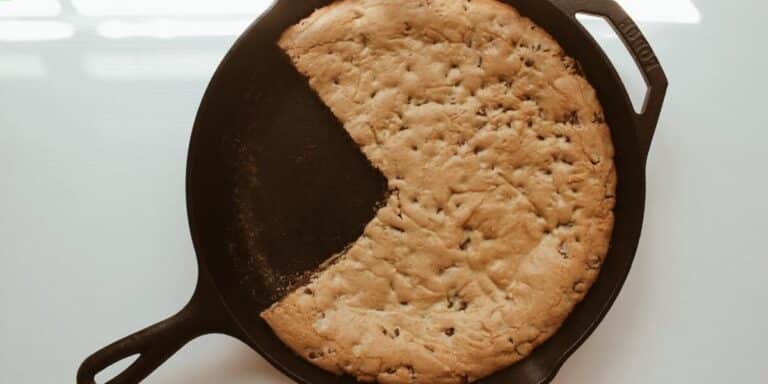Garlic Powder Vs Minced Garlic
You’re about to make a dish that calls for garlic, but you’re torn between using garlic powder and minced garlic. You know that each has its own strengths and weaknesses, but which one will give you the flavor you’re looking for? Garlic powder offers a convenient, subtle flavor that blends easily into other seasonings, while minced garlic provides a more robust taste that can elevate your dish. But there’s more to ponder than just flavor – texture, shelf life, and usage in recipes all play a role in making the right choice. Which one will you select?
Key Takeaways
• Garlic powder has a more subtle, slightly sweet taste, while minced garlic has a pungent, robust flavor.
• Garlic powder is about 3-4 times stronger than minced garlic, so less powder is required to achieve the same flavor.
• Garlic powder is suitable for dishes where a subtle garlic flavor is desired, while minced garlic is better for bold, pungent flavors.
• Garlic powder has a longer shelf life of up to a year, while minced garlic lasts for a few weeks to a few months.
• When substituting, use about 1/4 to 1/3 teaspoon of garlic powder for every 1 clove of minced garlic, adjusting as needed.
Differences in Flavor Profile
When you pit garlic powder against minced garlic, you’ll notice a marked difference in flavor profile, with the former offering a more subtle, slightly sweet taste and the latter packing a pungent punch. You’ll find that garlic powder has a more delicate, almost nutty flavor that’s perfect for adding a hint of garlic to dishes without overpowering them. On the other hand, minced garlic has a robust, intense flavor that’s ideal for recipes where you want a bold garlic taste.
You’ll also notice that garlic powder blends in more easily with other seasonings and spices, making it a great addition to marinades, sauces, and dips. Minced garlic, however, is best used in dishes where you want a strong garlic flavor to shine through, such as in pasta sauces, stir-fries, and roasted vegetables. Additionally, garlic powder can be used to add depth and warmth to soups and stews, while minced garlic is often used to add a pop of flavor to meats, seafood, and vegetables.
When cooking with garlic powder, you can sprinkle it over your food at any stage of cooking, whereas minced garlic is best sautéed or roasted to bring out its full flavor potential. Overall, both garlic powder and minced garlic have their unique uses and flavor profiles, and it’s up to you to decide which one to use based on your recipe and personal taste preferences.
Shelf Life Comparison
Regarding shelf life, garlic powder generally outlasts minced garlic due to its lower moisture content, which inhibits the growth of bacteria and mold. You can store garlic powder for up to a year without worrying about its potency or flavor, as long as you keep it in an airtight container in a cool, dry place. On the other hand, minced garlic usually lasts for a few weeks to a few months when stored in the fridge, and only a few days at room temperature.
You should check on your garlic powder periodically to guarantee it hasn’t lost its potency or developed an unpleasant odor. If you notice any changes, it’s best to replace it with a fresh batch. Minced garlic, however, requires more frequent checks, as it can quickly turn rancid.
Keep garlic powder in airtight containers, while minced garlic should be stored in sealed jars or airtight bags in the fridge. Heat and light can cause both garlic powder and minced garlic to degrade faster. If you won’t be using your minced garlic for a while, consider freezing it to prolong its shelf life. Simply chop it up, place it in an airtight bag or container, and store it in the freezer.
Texture and Consistency
Regarding texture and consistency, you’ll notice a significant difference between garlic powder and minced garlic, as the former has a smooth, powder-like consistency, while the latter has a coarser, more textured appearance. When you run your fingers over garlic powder, it feels fine to the touch and resembles baby powder. On the other hand, minced garlic has a chunky texture you can easily see and feel. This contrast affects how you measure and mix them into dishes.
The smooth texture of garlic powder makes it easier to blend evenly into sauces, marinades, and seasonings. You don’t have to worry about any lumps or garlic bits not distributing well. In contrast, minced garlic requires more mixing and blending to distribute its coarser particles evenly. Sometimes, you might still spot a few bits of garlic, even after mixing well.
When substituting one for the other, you’ll need to recognize this texture difference to achieve the desired outcome. The texture will also influence how easily you can sprinkle garlic powder over dishes, whereas minced garlic doesn’t sprinkle as readily due to its coarser texture. The distinction between garlic powder’s fine texture and minced garlic’s coarser bits will guide your expectations and usage, so it’s crucial to understand this fundamental difference. Comprehending these texture differences can refine your approach to incorporating garlic into your cooking.
Usage in Recipes
You’ll want to ponder the distinct textures of garlic powder and minced garlic as you decide how to incorporate them into your recipes, as this difference affects not only the final flavor but also the overall cooking process. When using garlic powder, you can easily mix it into sauces, marinades, and seasonings without worrying about texture. In contrast, minced garlic will add a bit of bulk to your dishes, which can be beneficial in certain recipes like stir-fries and soups.
As you’re cooking, keep in mind that garlic powder is more concentrated than minced garlic. You may need to adjust the amount used to achieve the desired flavor. Here are some general guidelines to get you started:
- Soups and Stews: Use 1/4 to 1/2 teaspoon of garlic powder or 1 to 2 cloves of minced garlic per quart of liquid.
- Meat and Vegetable Dishes: Sprinkle 1/4 to 1/2 teaspoon of garlic powder or mix in 1 to 2 cloves of minced garlic per pound of ingredients.
- Dressings and Marinades: Mix in 1/8 to 1/4 teaspoon of garlic powder or 1/2 to 1 clove of minced garlic per cup of liquid.
Remember that these are rough estimates, and you should taste as you go to determine the perfect balance of flavors for your dish. With a little practice, you’ll become comfortable using both garlic powder and minced garlic to add depth and richness to your recipes.
Health Benefits Compared
When it comes to nutritional value and health benefits, garlic powder and minced garlic have some key similarities and differences that can impact your overall well-being. Both forms of garlic contain compounds that have antibacterial, antiviral, and antifungal properties, which can help boost your immune system. They’re also rich in vitamins and minerals like vitamin C, vitamin B6, and manganese.
However, the drying process involved in making garlic powder can reduce the levels of certain nutrients, like vitamin C and allicin, a compound responsible for many of garlic’s health benefits. On the other hand, minced garlic tends to retain more of these nutrients since it’s not subjected to the same level of processing. That being said, garlic powder is often made from a higher concentration of garlic cloves than minced garlic, so the nutrient loss may be offset by the increased garlic content.
In terms of specific health benefits, both garlic powder and minced garlic may help lower cholesterol levels, reduce blood pressure, and even have anti-cancer properties. However, more research is needed to confirm the extent of these benefits. Ultimately, incorporating either form of garlic into your diet can have a positive impact on your health, but if you’re looking for a more nutrient-dense option, minced garlic might be the better choice. Just be sure to use it within a few days of opening to maximize its potency.
Preparing Garlic Powder
Now that you’ve decided to try garlic powder, you’re probably wondering how to prepare it. To make garlic powder, you’ll need to dehydrate garlic using one of several methods, which we’ll explore in detail. By understanding these methods and how to store your homemade garlic powder, you’ll be able to enjoy its flavor and benefits for a long time.
Dehydrating Garlic Methods
Dehydrating garlic to make powder involves evaporating the water content from the bulbs, which can be achieved through various methods, including oven drying, sun drying, or using a food dehydrator. You can try different methods to see what works best for you.
When it comes to dehydrating garlic, you have a few options:
- Oven Drying: Preheat your oven to its lowest temperature setting (usually around 150°F). Slice the garlic thinly and spread it out on a baking sheet lined with parchment paper. Leave the oven door slightly ajar to allow moisture to escape. Check on the garlic every hour until it’s dry and crumbly.
- Sun Drying: Slice the garlic thinly and place it on a wire rack or paper towels. Cover the garlic with cheesecloth or a mesh screen to keep out insects and dust. Leave it in direct sunlight for several days, bringing it inside at night to prevent moisture from accumulating.
- Food Dehydrator: Follow the manufacturer’s instructions for temperature and time settings. Slice the garlic thinly and spread it out in a single layer on the dehydrator trays.
Each method has its own advantages and disadvantages, so feel free to experiment and find what works best for you.
Storage and Shelf Life
As you’ve successfully dehydrated your garlic, you’ll need to store the resulting powder properly to preserve its flavor and shelf life. You’ll want to keep it away from light, moisture, and heat, as these can cause the powder to degrade quickly.
Here are some tips for storing garlic powder:
| Storage Option | Shelf Life |
|---|---|
| Airtight container at room temperature | 6-8 months |
| Airtight container in the fridge | 1-2 years |
| Freezer-safe container in the freezer | 2-3 years |
When storing garlic powder, make sure to use a clean and dry container to prevent contamination. If you plan to store the powder for an extended period, consider dividing it into smaller portions to prevent clumping. You can also add a desiccant packet or a few grains of rice to absorb any moisture and keep the powder fresh. By following these tips, you’ll be able to enjoy your homemade garlic powder for a longer period while maintaining its flavor and aroma.
Preparing Minced Garlic
Now that you’ve considered garlic powder, it’s time to explore preparing minced garlic. You’ll want to focus on safely mincing garlic to avoid accidents and unwanted tears in the kitchen. Whether you’re a seasoned cook or a beginner, properly storing minced garlic is also vital to preserve its flavor and aroma.
Mincing Garlic Safely
When you mince garlic, it’s generally safest to use a press or microplane grater, because these tools allow the enzyme compounds that create garlic’s pungent, irritating fumes to break down more quickly. This way, you’re less likely to end up with that annoying burning sensation in your eyes.
To mince garlic safely, follow these simple tips:
- Peel with care: Make sure to peel the garlic clove completely before mincing to prevent any bits of papery skin from getting in the way.
- Mince under cold running water: This can help to dissipate those irritating compounds and reduce the risk of burning your eyes.
- Point the press or grater away from you: By doing this, the garlic’s oils and compounds are released away from your face and eyes.
Storing Minced Garlic
To preserve the flavor and aroma of minced garlic, you’ll need to store it properly. You can’t just leave it out on the counter, as it’ll quickly lose its potency and become stale. Instead, transfer the minced garlic to an airtight container, such as a glass jar with a tight-fitting lid.
You’ll want to keep the container in the refrigerator to slow down the oxidation process, which can cause the garlic to become rancid. Make sure to press out as much air as possible from the container before sealing it, as oxygen can also contribute to spoilage. When stored in the fridge, minced garlic can last for up to a week.
If you won’t be using the minced garlic within a week, consider freezing it. Simply scoop the garlic into an ice cube tray, cover it with oil, and pop it into the freezer. Frozen garlic will retain its flavor and aroma for several months. Just be sure to label the container or ice cube tray, so you know how long it’s been stored.
Effects of Cooking Methods
Generally, the method you use to cook with garlic powder or minced garlic can noticeably affect the flavor and aroma of your dish. When you sauté or pan-fry minced garlic, you’ll get a rich, caramelized flavor that’s perfect for sauces, marinades, and stir-fries. On the other hand, if you add garlic powder to a dish towards the end of cooking, the heat won’t have a chance to mellow out the flavor, and you’ll end up with a more intense, pungent taste.
You can also roast garlic to bring out its natural sweetness. Simply slice the top off a whole head of garlic, drizzle with olive oil, and roast at 400°F (200°C) for 30-40 minutes. Then, mince the roasted garlic and add it to your dish for a deep, nutty flavor.
Here are some cooking methods that pair well with garlic powder or minced garlic:
- Searing meat or vegetables: Sprinkle garlic powder over your meat or veggies before searing them in a hot pan for added depth of flavor.
- Making soups or stews: Saute minced garlic with onions and ginger at the beginning of your soup or stew for a flavorful base.
- Roasting vegetables: Toss sliced or chopped veggies with olive oil, garlic powder, and salt before roasting in the oven for a savory, aromatic side dish.
Substitution Ratios Explained
When you’re substituting garlic powder for minced garlic, or vice versa, you’ll need to get the ratio right to achieve the desired flavor. You can’t simply swap one for the other in the same quantity, as garlic powder is more concentrated than minced garlic. To make the substitution successfully, you’ll want to understand the basics of the conversion ratio and how to adjust quantities accordingly.
Understanding Ratio Basics
Substituting garlic powder for minced garlic (or vice versa) requires understanding the ratio of powder to fresh garlic to achieve the preferred flavor in your recipe. You can’t just swap them out 1:1 and expect the same taste. When you’re working with garlic powder, you’re essentially dealing with a concentrated form of garlic. It’s more potent than minced garlic, so you’ll need less of it to achieve the same flavor.
- Garlic powder is about 3-4 times stronger than minced garlic. So, if a recipe calls for 1 teaspoon of minced garlic, you can use about 1/4 to 1/3 teaspoon of garlic powder instead.
- The flavor of garlic powder can vary depending on the brand and type. Some garlic powders may be more potent than others, so start with a small amount and adjust to taste.
- The type of dish you’re making can also affect the ratio. For example, if you’re making a sauce or marinade, you may want to use a bit more garlic powder to guarantee the flavor comes through.
Measurement Conversion Tips
To accurately convert between garlic powder and minced garlic, you’ll need to understand the basic substitution ratios and how they’re influenced by the specific recipe and desired flavor profile. When substituting minced garlic with garlic powder, a general rule of thumb is to use about 1/4 to 1/3 teaspoon of garlic powder for every 1 clove of minced garlic. However, this ratio can vary depending on the recipe and your personal taste preferences.
For example, if a recipe calls for 2 cloves of minced garlic, you can use 1/2 to 2/3 teaspoon of garlic powder instead. Keep in mind that garlic powder is more concentrated than minced garlic, so a little goes a long way. If you’re using garlic powder in a recipe that’s going to be cooked for an extended period, you may want to start with a smaller amount and adjust to taste, as the flavor can intensify during cooking. Conversely, if you’re using minced garlic, you may want to use more to achieve the desired flavor. By understanding these substitution ratios, you’ll be able to make informed decisions when converting between garlic powder and minced garlic.
Quantity Adjustment Guidelines
Now that you’re familiar with the basic conversion tips, you can use the following quantity adjustment guidelines to fine-tune your substitution ratios and get the flavor just right in your recipes. When substituting garlic powder for minced garlic, you’ll typically use less powder because of its concentrated flavor. Here are some general guidelines to keep in mind:
- General Cooking: If a recipe calls for 1 teaspoon of minced garlic, start with 1/4 to 1/2 teaspoon of garlic powder and adjust to taste.
- Roasted or Grilled Dishes: For dishes where the garlic flavor will mellow out during cooking, you can use a slightly higher ratio of 1/2 to 3/4 teaspoon of garlic powder per 1 teaspoon of minced garlic.
- Dips, Sauces, and Marinades: In recipes where the garlic flavor won’t cook off, start with a lower ratio of 1/8 to 1/4 teaspoon of garlic powder per 1 teaspoon of minced garlic.
Choosing the Right Option
Your decision between garlic powder and minced garlic ultimately comes down to the type of dish you’re preparing and the flavor profile you’re aiming for. If you’re making a dish where you want a subtle, slightly sweet garlic flavor, garlic powder is the way to go. It’s perfect for sauces, marinades, and seasonings where you don’t want the garlic to overpower the other ingredients. On the other hand, if you’re looking for a bold, pungent garlic flavor, minced garlic is the better choice. It’s great for dishes like stir-fries, roasted vegetables, and meats where you want the garlic to be the star of the show.
You also need to ponder the texture of the dish. If you’re making a smooth sauce or dip, garlic powder is a better choice because it will dissolve easily and won’t leave any texture behind. But if you’re making a dish with a lot of texture, like a stew or a braise, minced garlic will add a nice depth of flavor and texture.
Ultimately, the choice between garlic powder and minced garlic comes down to personal preference and the type of dish you’re making. Both have their own unique advantages and disadvantages, and it’s up to you to decide which one will work best for your recipe. By selecting the right option, you’ll be able to bring out the best flavors in your dish and create a culinary masterpiece.
Frequently Asked Questions
Can I Make Garlic Powder From Roasted Garlic?
"What a coincidence! You’re wondering if you can make garlic powder from roasted garlic, just as you’re staring at those leftover roasted cloves. Yes, you can! Simply dry and grind them into a powder – voilà, homemade garlic powder!"
Is Minced Garlic in a Jar as Good as Fresh?
You’re wondering if minced garlic in a jar is as good as fresh? Honestly, it’s not. You’ll sacrifice some flavor and texture, but it’s still a convenient alternative that’ll do in a pinch, and it’s better than nothing.
Can I Freeze Garlic Powder to Extend Shelf Life?
As it happens, you’re wondering about freezing garlic powder just as you’re about to clean out your pantry. You can freeze garlic powder to extend its shelf life, and it’s quite easy – simply store it in an airtight container.
Will Garlic Powder or Minced Garlic Cause Bloating?
You’re wondering if garlic powder or minced garlic will cause bloating. Your body might react differently to each, but generally, both can be problematic if you’re sensitive to FODMAPs or have other digestive issues, so monitor your body’s response.
Are Garlic Powder and Garlic Salt the Same Thing?
You’re wondering if garlic powder and garlic salt are the same thing – they’re not. Garlic salt is a mixture of garlic powder and salt, whereas garlic powder is just dehydrated garlic with no added salt.





